A souvenir is something that everyone waits for when someone travels abroad, whether it’s a kid or an adult. It’s a tangible connection to a place, a memory encapsulated in a small trinket or a beautifully crafted item that can evoke feelings of nostalgia and adventure.
If you are wondering what things you can buy from Japan, in this guide, you will find your answers as this blog explores:
- Japan souvenirs
- Places to buy it
- Shopping Tips
I remember watching Japanese cartoons and being fascinated by the cute little hand fans, kimonos, and the fiery red lanterns that adorned festivals. These items represent not just their aesthetic appeal but also the culture and traditions of Japan.
Quick Look at the Japanese Souvenirs
|
So, a souvenir is something loved by all. It also sparks conversations and allows you to share your travel stories with friends and family.
Collecting souvenirs is more than just owning physical items. It’s about remembering the special moments from your journey. Each piece has its own story and memory, making every souvenir a unique treasure from your travels.
So, why wait? Let’s discuss the different things you can buy from Japan.
Best Things to Buy from Japan
Japanese people are very thoughtful, and that same care naturally extends to their souvenirs.
There’s a philosophy of “omotenashi” (wholehearted hospitality) and “kokoro” (heart, spirit) in their culture, and you can feel it in the smallest details.
Souvenirs, too, reflect this thoughtfulness. They are rarely random. They often represent the place they come from, the season, or a shared experience.
Instead of being just objects, they are chosen with the idea of connection and memory in mind- like a gentle way of saying, “I thought of you here.”
So, let’s know the details of each famous thing you can buy in Japan,
Matcha
In Japan, Matcha is not just a drink. It carries centuries of tradition, especially through the Japanese tea ceremony, which is all about mindfulness, respect, and connection.
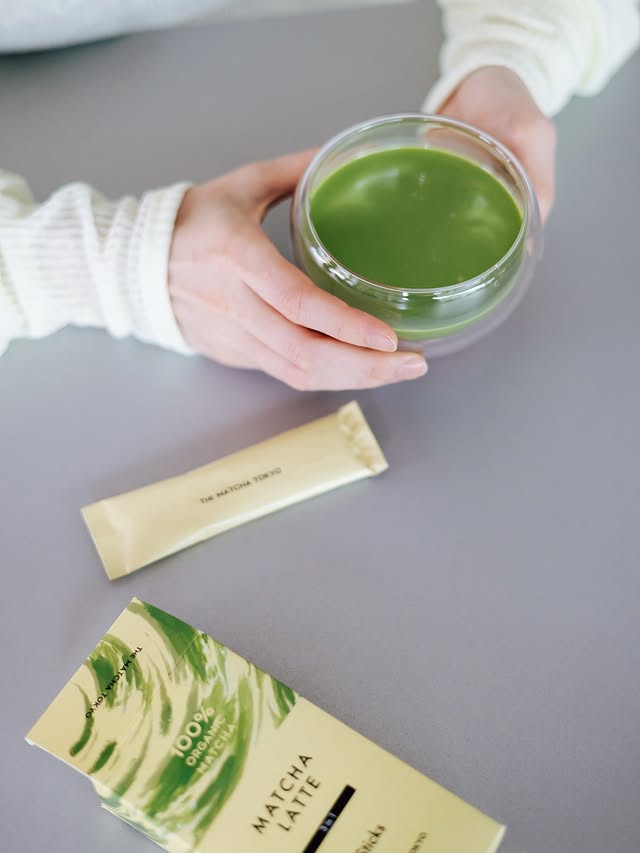
Japanese love matcha because of its health benefits-
- It’s packed with antioxidants, known as catechins, which are linked to health and longevity.
- It gives a calm, sustained energy boost (thanks to caffeine + L-theanine) without the jitters of coffee.
- It represents purity, balance, and harmony, which resonate deeply with Japanese aesthetics and philosophy.
Matcha isn’t just one kind of green powder; there are actually different grades and styles, each serving a unique purpose:
- Ceremonial Grade– The highest quality, used in traditional tea ceremonies. It’s smooth, deep green, and meant to be enjoyed simply by whisking it with hot water.
- Premium Grade– Slightly below ceremonial, still very refined, often used for daily drinking.
- Culinary Grade– More robust and slightly bitter, perfect for cooking and baking (think matcha lattes, ice creams, cakes, and noodles).
You will also notice slight differences based on where the tea is grown, such as in Uji, Nishio, or Shizuoka. Each region gives its tea a unique flavour.
Places to Buy Matcha
| Your Preference | Best Options |
| Luxury ceremonial-grade matcha |
|
| Stylish cafés with take-home matcha |
|
| Convenient souvenirs at train stations |
|
| Traditional, artisanal experience |
|
| Midrange options in city centres |
|
The taste of Matcha is unique, earthy, slightly grassy, with a gentle bitterness balanced by natural sweetness. Good matcha feels creamy and smooth, almost umami-rich, leaving a lingering freshness. It’s one of those flavours that grows on you; the more you sip, the more depth you notice.
Thus, it makes a great Japanese souvenir. So, must buy it.
Regional KitKats
Did you know Japan has released over 300 flavours? Yes, you heard it right!
In Japan, the KitKat name sounds like “Kitto Katsu,” which means “surely win” in Japanese, so people often see it as a lucky charm.
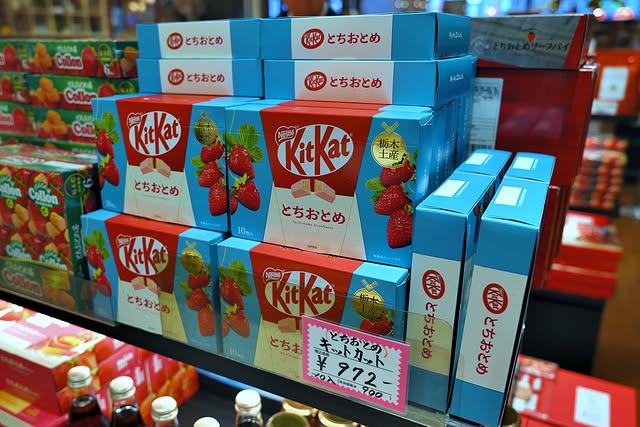
Over the years, Nestlé Japan has created special flavours that reflect local ingredients and traditions. These unique editions are only available in certain regions, making them like small, edible souvenirs of each area.
Why Are Kitkats a Great Souvenir?
Kitkats are fun & collectable as each flavour is tied to a region, so gifting them feels like sharing a piece of your travels.
Secondly, they are compact & travel-friendly, coming in neatly packaged boxes that are easy to carry in your luggage.
They come in safe flavours like strawberry and matcha to adventurous ones like wasabi or sake; they’re a conversation starter.
Lastly, they are affordable and luxurious. Beautifully packaged, unique to Japan, but not too expensive, perfect for colleagues, friends, or family.
Popular Regional KitKat Flavours
- Uji Matcha (Kyoto)– Rich green tea flavour, smooth and earthy.
- Wasabi (Shizuoka & Nagano)– A surprisingly mild balance of sweetness and wasabi kick.
- Strawberry Cheesecake (Yokohama / Mt. Fuji area)– Sweet, creamy, and fruity.
- Sake (Niigata)– A delicate hint of Japanese rice wine infused in white chocolate.
- Shinshu Apple (Nagano)– Crisp and fruity, inspired by the region’s famous apples.
- Hojicha (Kyoto, Kanazawa)– Roasted green tea with a nutty, smoky flavour.
- Purple Sweet Potato (Okinawa & Kyushu)– Vibrant and lightly sweet.
- Tokyo Banana x KitKat (Tokyo exclusive)– Collaboration with Tokyo’s iconic banana sponge cake.
Where to Buy Regional KitKats
- Airports & Train Stations
- Souvenir Shops (Omiyage Shops)
- Department Stores & Convenience Stores (Lawson or 7-Eleven)
- Duty-Free Shops
So, impress your loved ones with these playful, delicious flavours of Japan.
Japanese Whiskey & Sake
Japanese whisky is famous around the world for its precision, balance, and smooth flavours. It has subtle aromas and a smooth finish. Whiskies from distilleries like Yamazaki or Nikka, as well as sake from specific breweries, are unique.

Sake, on the other hand, is deeply rooted in Japanese culture and pairs floral, fruity, or umami notes depending on the style.
Why Japanese Whisky & Sake Make Great Souvenirs for Indians?
Japanese whisky usually uses barley, either unmalted or malted. It is often produced in pot stills and sometimes aged in special casks, such as Mizunara oak.
Whereas, Indian whisky often contains spirits made from molasses or blends and uses different ageing methods.
Sake has a delicate, sometimes complex flavour, ranging from floral to creamy umami, much unlike the bold profile of Indian spirits like Old Monk or Johnnie Walker.
Sake is integral to rituals and ceremonies in Japan, while alcohol in India typically doesn’t have such ceremonial significance.
Customs Rules & Allowances
Learning about the guidelines is best before buying drinks-
Duty-Free Allowance
- Travellers coming to India can bring up to 2 litres of alcoholic beverages, like whisky, sake, or wine, without paying duty.
- This allowance is for each person and includes drinks bought from local stores abroad as well as duty-free items.
Duties on Excess
- If you bring in more than 2 litres of alcohol, you need to go through the Red Channel and pay customs duties. This will be approximately 150% of the value of the extra liquor, plus additional GST and other fees in certain cases.
- Some airports charge an effective duty of about 38% to 38.5% on excess value. This amount can vary based on federal fees.
Things to Remember
- Must be of legal drinking age to import alcohol
- Use duty-free sealed bags
- Transfer to checked baggage for domestic flights
Kimonos & Yukatas
Let’s understand what attire they wear in Japan before buying it-
| Kimonos | Yuktas |
| The kimono is a key cultural symbol of Japan. The word “kimono” means “thing to wear.” | A yukata is a light, casual kimono worn in summer. It is usually made of cotton. |
| In the past, people wore kimonos on a daily basis. Now, they are mainly worn for special events, such as weddings, festivals, and tea ceremonies. | People often wear yukatas at summer festivals, called matsuri, or while staying at traditional inns, known as ryokan. |
| Do you know how thoughtful they are? Each pattern, fabric, and colour of kimonos reflects the season, status, or even the wearer’s life stage. | Yukatas are typically paired with wooden sandals called geta. They represent comfort, simplicity, and summer celebrations. |
Why They Make Great Souvenirs?
Both of these attire is a piece of living tradition. The fabrics, colours, and patterns are often hand-dyed or woven with incredible attention to detail. You can wear it, frame it as art, or even repurpose the fabric for decor.
Cost of Kimono vs Yukata
| Attire | Price Range |
| Kimono: Handmade silk kimonos are often very expensive. They’re works of art, often passed down through generations. |
Indian Rupee – ₹30,000 to ₹6,00,000+ |
|
Yukuta: Yukutas are a simple cotton dress. So, it is reasonable |
Indian Rupee – ₹1,800 to ₹9,000 |
Note: You can find many second-hand shops in Kyoto and Tokyo’s flea markets. They offer gently used kimonos and yukatas at affordable prices, often for less than ¥5,000 (₹3,000).
Where to Buy?
- Department stores (such as Isetan, Daimaru) Offer Authentic, new, and high-quality options.
- Traditional shops in Kyoto (Nishijin district, Gion area)– Known for handwoven fabrics and authentic craftsmanship.
- Tourist areas (Asakusa in Tokyo, Kyoto’s Higashiyama)– More affordable, souvenir-style yukatas.
- Second-hand & vintage shops
Furoshiki
Have you seen those Japanese wrapping cloths used for carrying, storing, or gifting items in cartoons? That is none other than Furoshiki.
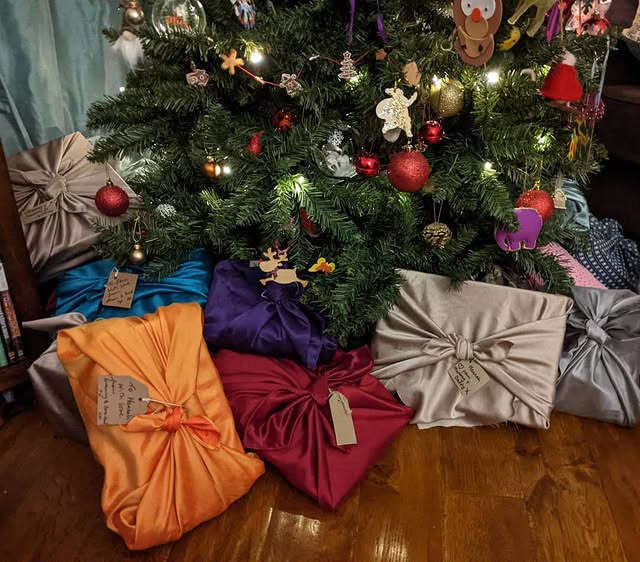
The word furoshiki means “bath spread.” It was once used to wrap clothes while visiting public baths. In modern Japan, it has made a comeback as an eco-conscious alternative to plastic bags.
| Did you know?
The Japanese government even promotes furoshiki as part of the “mottainai” (no waste) culture. |
It shows the Japanese ideas of respect, beauty, and sustainability. You can use a square cloth to wrap gifts, carry bottles, or even turn it into a bag.
It can be folded into many styles- for carrying books, bottles, bento boxes, or even used as a fashion accessory.
Cost of Furoshiki
- Simple cotton ones: ₹300- ₹1,200
- Designer silk or hand-dyed ones: ₹1,800 – ₹6,000+
Where to Buy?
- Department stores (Isetan, Daimaru)
- Kyoto craft shops (Nishijin district)
- Tourist areas like Asakusa (Tokyo)
- Specialty eco-shops
Daruma & Kokeshi Dolls
Let’s understand these traditional Japanese dolls before buying them, as they make excellent souvenirs for kids and culture lovers alike.
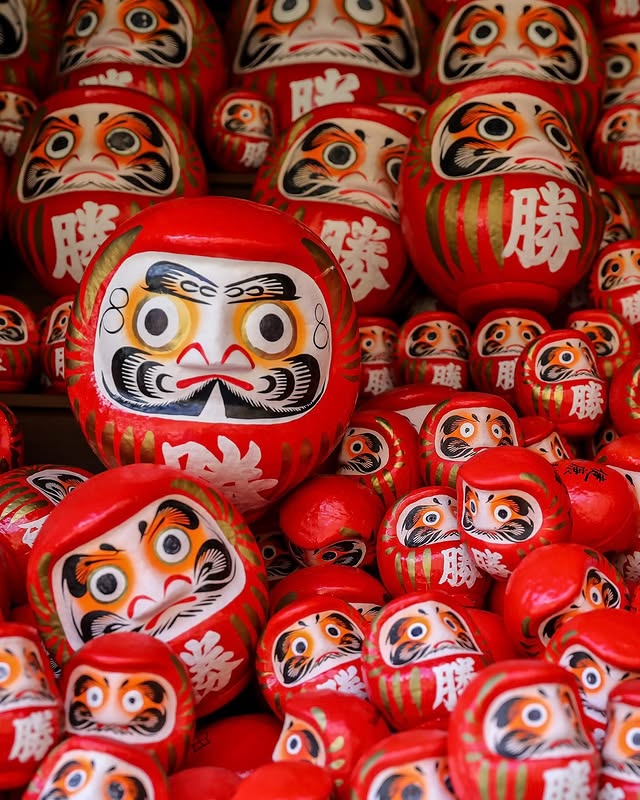
| Daruma Dolls | Kokeshi Dolls |
| Daruma dolls are modelled after Bodhidharma, the monk who founded Zen Buddhism. | Kokeshi are wooden dolls that originated in Japan’s Tohoku region. |
| They symbolise luck, perseverance, and determination. | They symbolise friendship, warmth, and protection. |
| When purchased, their eyes are blank. You paint in one eye when making a wish or goal, and the other when it comes true. | They have a simple design- a round head and cylindrical body- painted with floral or seasonal patterns. |
| They are a reminder of the Japanese spirit: fall down seven times, stand up eight. | Each one is hand-carved and painted, so no two are exactly the same. |
Why They Make Great Souvenirs?
- Compact and easy to carry, yet rich in cultural meaning.
- Daruma dolls motivate you to achieve your goals.
- Kokeshi dolls are heartfelt gifts, symbolising love and connection.
- Beautifully hand-crafted, they also make unique home décor.
Cost of Daruma vs Kokeshi Dolls
| Doll Type | Price Range |
| Daruma: Made of papier-mâché, often colourful and symbolic. |
Indian Rupee – ₹300 to ₹3,000+ |
|
Kokeshi: Hand-carved wooden dolls, from simple to highly detailed. |
Indian Rupee – ₹900 to ₹6,000+ |
Tip: Second-hand or flea markets sometimes offer vintage kokeshi at lower prices.
Where to Buy?
- Daruma: Temples (especially Takasaki in Gunma Prefecture, famous for Daruma), souvenir shops across Japan.
- Kokeshi: Speciality craft shops in Tohoku, artisan stores, flea markets, and tourist areas like Asakusa (Tokyo).
- Department stores & gift shops often have beautifully packaged.
Ceramic Tea Sets & Cups
Ceramic tea sets and cups are central to Japanese tea culture. They are used in traditional tea ceremonies (chanoyu) and for daily tea drinking.
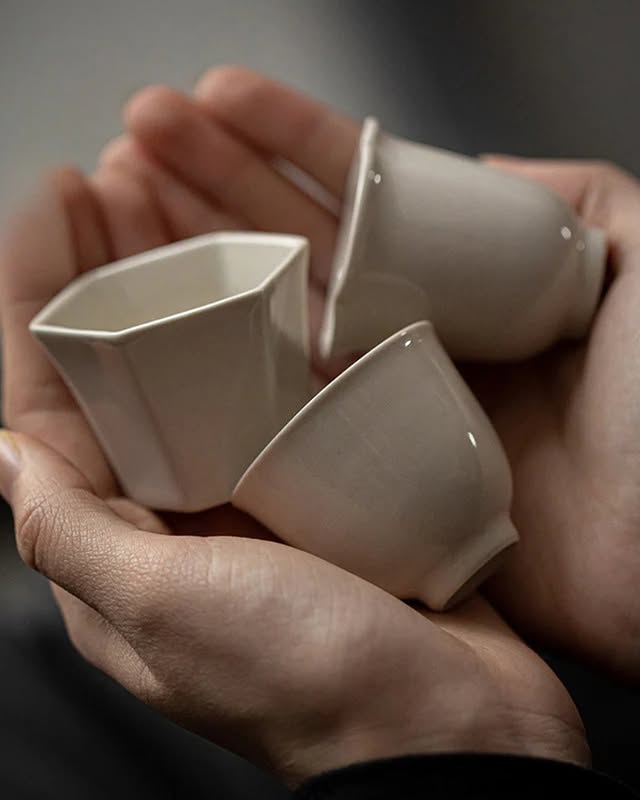
These pieces reflect Japan’s belief in finding beauty in everyday life. They are not just containers; they are also artworks that show craftsmanship and mindfulness.
Did you know these Interesting Facts about Japanese Ceramic Tea Sets?
- Each region in Japan has its own style of ceramics, such as Arita, Kutani, and Mino ware.
- Each cup or pot is often handmade by artisans, making every piece unique.
- The imperfections- tiny cracks, uneven glazes, or earthy textures- reflect the Japanese aesthetic of wabi-sabi, the beauty of imperfection.
- Colours often mirror nature, featuring earthy browns, soft greens, snowy whites, or shades that produce the beauty of cherry blossoms and autumn leaves.
- Some cups (called yunomi) are for daily use, while others (chawan) are reserved for tea ceremonies.
Cost of Ceramic Tea Sets & Cups
- Everyday tea cups (yunomi): ₹600- ₹3,000
- Handmade artisan sets: ₹3,000- ₹18,000
- Master crafts or antique pieces: ₹30,000+
Where to Buy?
- Kyoto (Nishiki Market, Gion shops)
- Arita (Saga Prefecture)
- Department stores (Isetan, Takashimaya)
- Souvenir shops in Asakusa (Tokyo)
- Speciality pottery towns (Mashiko, Seto, Shigaraki)
So, take home Japanese art, craftsmanship, and mindfulness.
Anime & Manga Merchandise
Who isn’t a fan of classics like Naruto and Dragon Ball, to newer hits like Demon Slayer? Note that Japan is their birthplace. So, visiting Japan and thinking about what to buy, the answer is anime and manga merchandise.
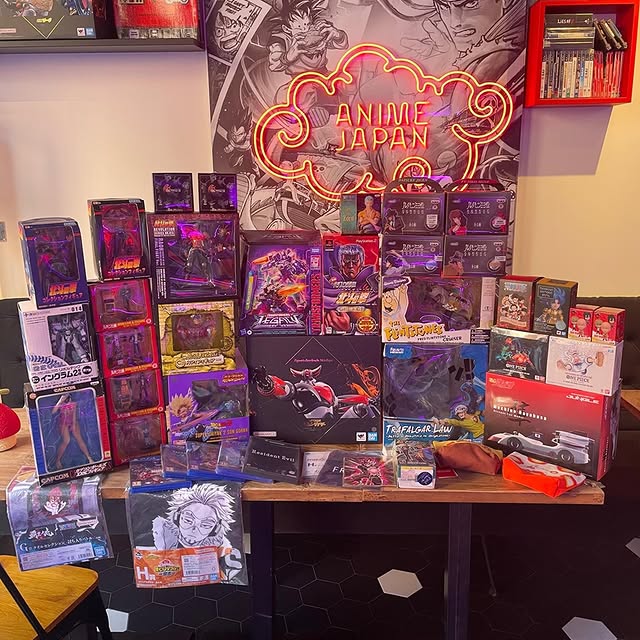
You can buy figures, plush toys, apparel, or stationery, while even simple badges or keychains bring joy and nostalgia.
In Japan, anime and manga are everywhere. You can see them on posters in trains and at themed cafés. They are a big part of daily life.
Cost Guide
- Keychains & stationery: ₹180- ₹900
- Plush toys & apparel: ₹900- ₹3,000
- Figures: ₹3,000- ₹18,000
Where to Buy?
- Akihabara (Tokyo)
- Nakano Broadway
- Animate stores (nationwide)
- Theme cafés & parks (offer limited editions)
- Gachapon machines in convenience stores
Remember, if you are a hardcore anime fan, be sure to visit Akihabara in Tokyo. It will be your dreamland.
Gachapon Capsule Toys
The very popular toys that pop out of vending machines across Japan are Gachapon. You just need to insert a few coins, twist the knob, and out comes a surprise toy in a plastic capsule.
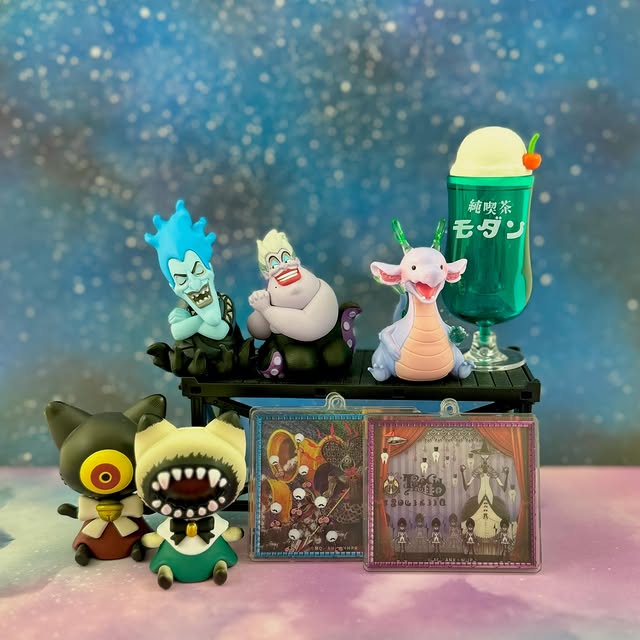
From anime characters and cute animals to quirky miniatures, the variety is endless. These toys reflect Japan’s love for detail, creativity, and playfulness.
Cost Guide
Usually ¥200-¥500 per capsule (₹120- ₹300). Some premium machines may cost more for special series. So, keep the coins ready when you visit there!
Where to Buy?
- Akihabara (Tokyo)
- Ikebukuro & Shibuya
- Major train stations & shopping malls
- Gachapon Kaikan (Tokyo)
Gachapon are pieces of joy, not just for kids but for adults too! So, must buy for your loved ones.
Japanese Stationery
Japanese stationery is all about the world of cute, creativity, design, and precision. Each item is designed to make daily life smoother and more beautiful.
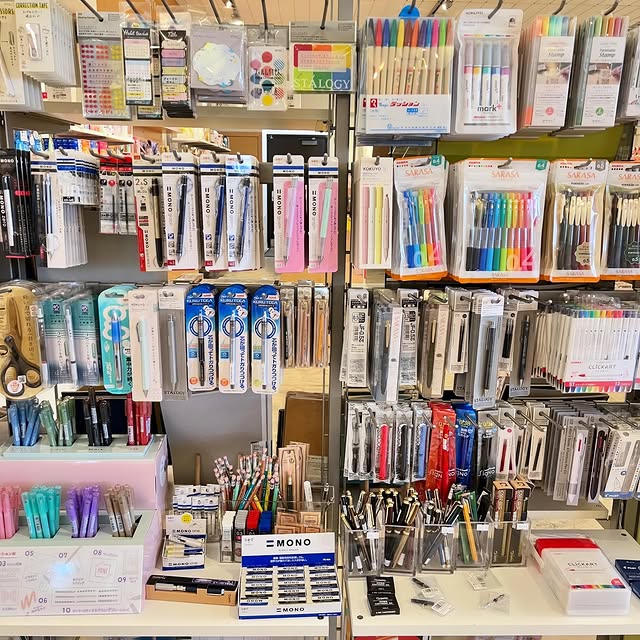
A pen glides effortlessly, a notebook opens flat, and a roll of washi tape turns plain pages into art. It’s about finding happiness in the little things.
So, have a look at the best stationery products
Best Japanese Stationery to Buy
|
Cost Guide
- Pens & pencils: ₹60-₹300
- Washi tapes & sticky notes: ₹120- ₹500
- Notebooks & planners: ₹300- ₹1,200
Where to Buy
- Loft & Tokyu Hands
- Itoya (Tokyo)
- Muji stores
- 100-yen shops (Daiso, Seria)
Japanese stationery serves as a gentle reminder that even everyday moments can be special.
Electronics
You must have heard this phrase, “Japan is living in 2050”! But do you know why it is said so? Because of its advanced technology.
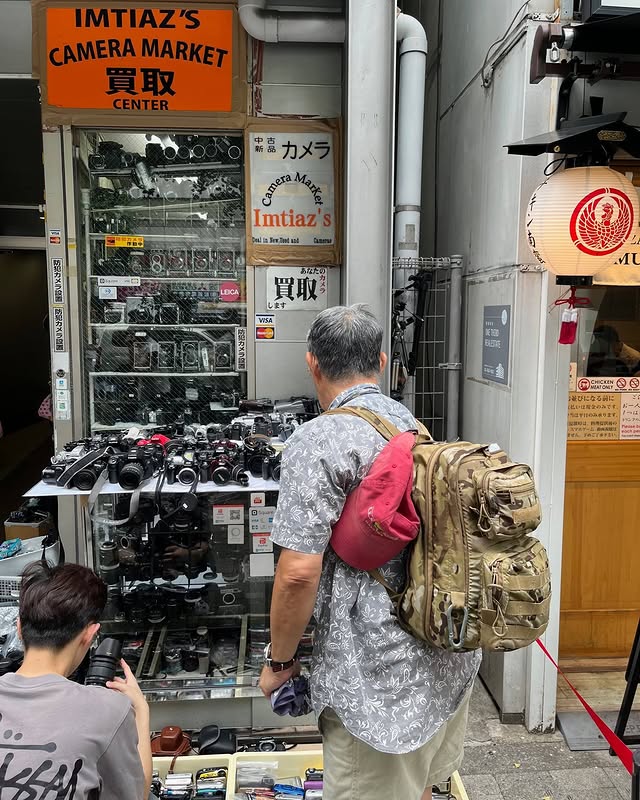
Talking in terms of electronics, from sleek headphones and quirky gadgets to high-quality rice cookers, cameras, and beauty devices, Japanese electronics combine innovation with durability.
These products are not just helpful; they are designed to be everyday companions that reflect thoughtfulness and precision.
Best Japanese Electronics Souvenirs
|
Where to Buy?
- Akihabara, Tokyo
- Bic Camera & Yodobashi Camera
- Don Quijote (Donki)
- Airports Duty-Free
Customs Rules for Indian Tourists
- Duty-free allowance: ₹50,000 per adult passenger.
- One laptop extra allowance (duty-free).
- Over the limit→ 38.5% duty on value.
- Used personal items (camera, phone, laptop, hair dryer) are usually exempt if clearly used.
Japanese electronics show the country’s focus on innovation, craftsmanship, and attention to detail. Their technology aims to make life easier and more enjoyable. Owning these gadgets is like bringing home a piece of Japan’s futuristic yet human-centred lifestyle.
Japanese Beauty & Skincare
Japanese skincare focuses on simplicity and effectiveness. It emphasises hydration, protection, and prevention, rather than just hiding imperfections. This is why their products feel gentle but work well.
What Makes Them Unique?
- Natural Ingredients– Green tea, rice bran, camellia oil, seaweed, and pearl extracts are often used.
- Modern Innovation– Japan invests heavily in beauty tech, from sheet masks to beauty gadgets.
- Thoughtful Packaging– Sleek, minimal, and often eco-friendly, reflecting Japanese aesthetics.
- Philosophy of Kaizen (continuous improvement)– Products are constantly refined for quality and effectiveness.
Best Japanese Beauty & Skincare Items to Buy
|
Where to Buy?
- Drugstores (Matsumoto Kiyoshi, Don Quijote, Kokumin)– Affordable bestsellers.
- Department Stores (Isetan, Takashimaya, Daimaru)– Luxury skincare brands.
- Duty-Free Shops at Airports– Great for last-minute authentic buys.
So, while shopping, you must buy these items in Japan for a glass-like skin.
Kitchenware
In Japan, cooking is regarded as an art form rather than just a daily chore. The kitchenware reflects this philosophy; it is both beautiful and precise, designed to enhance the cooking experience.
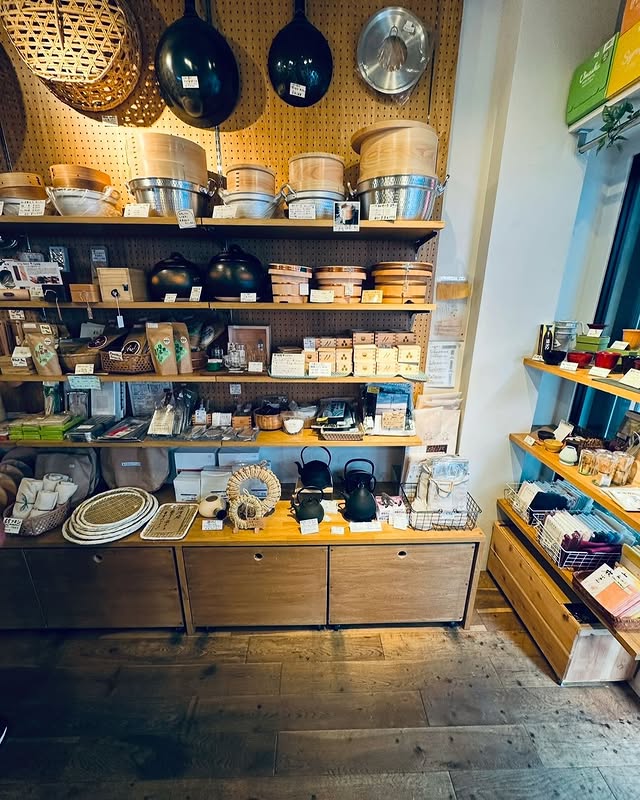
Japanese kitchens are equipped with many items that are handmade by artisans using centuries-old techniques. knives that cut exceptionally well and bowls that are aesthetically pleasing. Each item exemplifies a blend of tradition, skilled craftsmanship, and practical functionality.
Best Japanese Kitchenware to Buy
|
Where to Buy?
- Kitchenware District in Tokyo (Kappabashi Street)
- Department Stores (Takashimaya, Isetan)
- Local Markets & Artisan Shops in Kyoto or Osaka
- Don Quijote & Tokyu Hands
Kitchenware is useful and artistic. Every time you use them, you’ll feel a connection to Japan’s food culture. You can also use it as a decorative piece. So, must buy it and present it to your mom!
Japanese Fan & Chopsticks
In Japan, hand fans are symbols of elegance, tradition, and good luck. Fans often feature designs like cherry blossoms, cranes, waves, or Mount Fuji, making each one a unique piece of art.
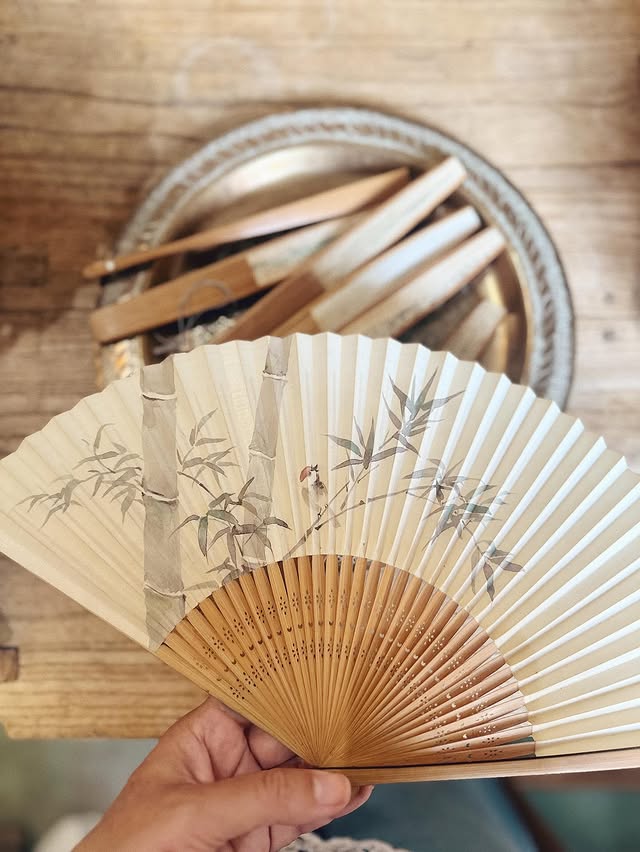
The folding fan (Sensu) opens like a flower, symbolising new starts and success.
The flat, round fan (Uchiwa) is traditionally associated with summer festivals and casual gatherings.
In Japanese culture, fans are also used in traditional dance, tea ceremonies, and even theatre (Kabuki & Noh). It also represents seasonal beauty.
Where to Buy?
- Kyoto (Gion & Nishijin districts)
- Asakusa, Tokyo
- Department Stores (Isetan, Takashimaya)
- Don Quijote & Tokyu Hands
So, buying it is a great choice because it is perfect for both practical use and home décor. It is lightweight and foldable, which makes it easy to carry home.
Hello Kitty
| Shintaro Tsuji, the founder of Sanrio, explaining Hello Kitty’s “three messages”:
“The first is kawaii [cuteness], so she is loved by everyone. The second is her ribbon- a ribbon is something that joins people together, so it means friendship. The third is that Kitty-chan has no mouth- she has to take your hand and help you. Cuteness, friendship, helping each other: that is Kitty’s message.” |
It is fascinating, isn’t it?
So, Hello Kitty is not just a character, it’s a global icon born in Japan in 1974 by Sanrio. In Japan, Hello Kitty isn’t just for kids- you’ll find her on everything from plushies and keychains to kitchenware, cosmetics, and even trains!
Hello Kitty reflects Japan’s love for kawaii (cuteness) culture. She symbolises innocence, positivity, and the little joys in everyday life.
Where to Buy?
- Sanrio Stores (Tokyo, Osaka, Kyoto)
- Tokyo Character Street (Tokyo Station)
- Don Quijote (Donki)
- Airports & souvenir shops
Hello Kitty promotes joy in little things, as it is available in endless forms- collectables, toys, lifestyle items. Buy one to spread happiness!
Conclusion
Japan offers many unique souvenirs, each one filled with history and craftsmanship. Whether you choose a beautiful kimono, a fun gachapon toy, or a box of local KitKats, every item has a story to share. The best part is that you can find something for every taste, budget, and suitcase size. Find something for every taste, budget, and suitcase size.
Ready to bring home a piece of Japan? Start your shopping list today and make sure your trip memories last long after the flight back!
Frequently Asked Questions on What to Buy in Japan
What is Japan most famous for when it comes to souvenirs?
Japan is best known for cultural items like kimonos, yukatas, hand fans, chopsticks, ceramics, matcha, sake, and quirky souvenirs like gachapon toys, KitKats, and anime goods.
Are Japanese souvenirs expensive?
Not always! Everyday items like stationery, matcha snacks, or fans are affordable, while luxury pieces like kimonos or ceramics can be costly but worth it for their craftsmanship.
What food souvenirs are must-buys?
Regional KitKats, matcha products, Japanese sake, and traditional snacks like mochi or senbei are top picks.
Can I bring alcohol like sake or whiskey back to India?
Yes, but within limits – generally up to 2 litres for personal use, with a duty-free allowance of up to 1 litre. Extra may attract customs duty.
Is Japanese stationery really that special?
Absolutely! From gel pens and washi tape to unique notebooks, Japanese stationery is loved worldwide for its quality, creativity, and cuteness.